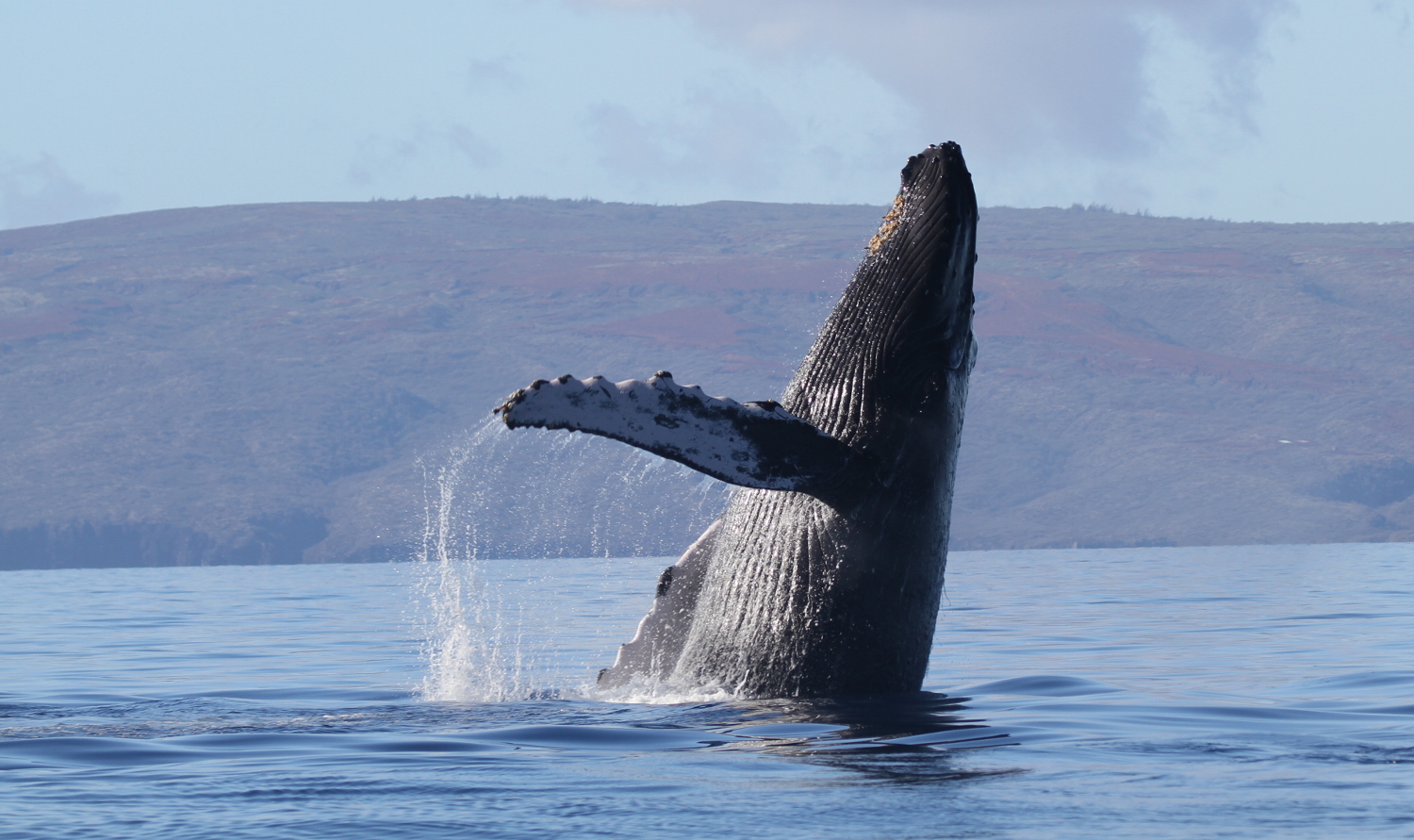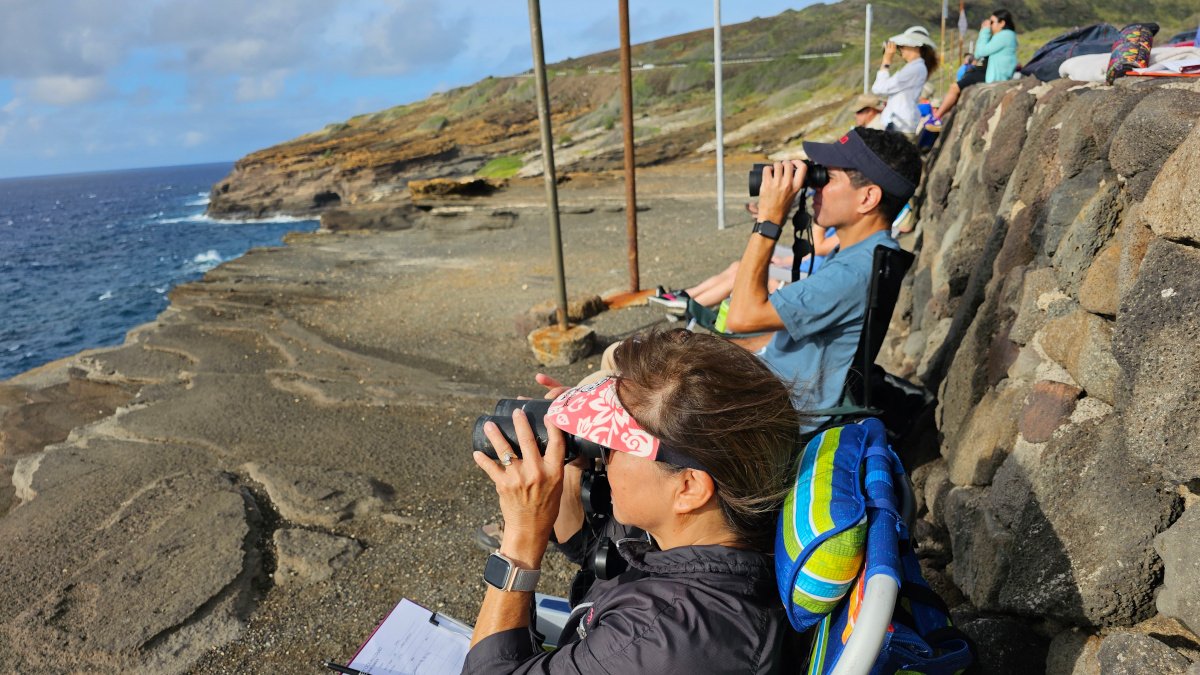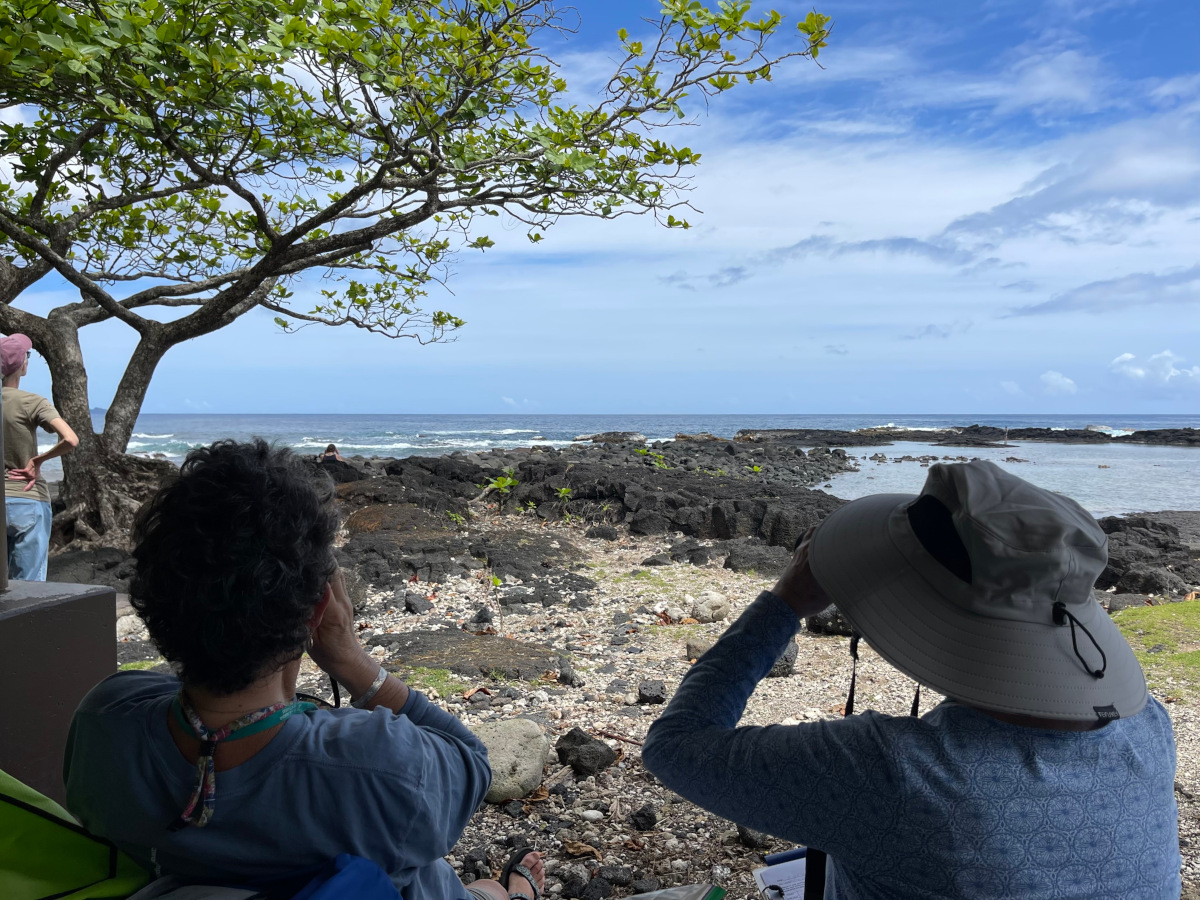(BIVN) – The Sanctuary Ocean Count and Great Whale Count concluded for the 2023 Whale Season, with counts held on Kaua‘i, O‘ahu, Hawai‘i, and Maui.
From the NOAA Hawaiian Islands Humpback Whale National Marine Sanctuary:
320 volunteers gathered data from the shores of Kaua‘i, O‘ahu and Hawai‘i islands during the Hawaiian Islands Humpback Whale National Marine Sanctuary Ocean Count and from Maui during the Great Whale Count by Pacific Whale Foundation, the last of three coordinated whale counts between the two organizations in 2023. This is the first year since March 2020 that both programs will be resuming normal operations.
This is the fifth year that both counts are coordinated on the same days, ensuring the data from all the main Hawaiian Islands are collected simultaneously.
Volunteers collected data from 42 sites across all the main Hawaiian Islands on March 25. A total of 169 whales were observed during the 8:30 -8:45 am time period, the most of any time period throughout the day’s count.
On the islands of Kaua‘i, O‘ahu, and Hawai‘i, Ocean Count volunteers collected data from 30 sites; a total of 117 whales were observed during the 8:30-8:45 am time period, the most of any time period throughout the day’s count.
On Maui, Great Whale Count volunteers collected data from 12 sites during 15-minute intervals between 8:30 am and 11:50 am. A total of 55 whales were observed during the 9:00-9:15 am time period, the most of any time period throughout the day’s count.
On Kaua‘i, the total number of whales observed during the day’s count was 273, on O‘ahu, the total was 467, and Hawai‘i 68. The total number for the Great Whale Count on Maui was 313, for a grand total of 1,121 throughout the state. This number may represent duplicate sightings of the same whale by different observers or at different time periods or different locations throughout the day.
Data collected during the Sanctuary Ocean Count and Great Whale Count combined with other research efforts can help reveal trends in humpback whale occurrence within and amongst whale seasons.

Breaching adult humpback whale; Pacific Whale Foundation | Research activities conducted under NMFS MMPA Permit No. 21321
Across the main Hawaiian Islands, weather conditions were primarily clear and sunny skies with calm seas making it ideal for observing whales. Due to the ideal weather conditions a lot of humpback whale activity was observed during the dayʻs count. A variety of other species were also spotted during the count including honu (green sea turtles), naiʻa (spinner dolphins), mālolo (Hawaiian flying fish) and multiple bird species such as ʻiwa (great frigatebird), mōlī (Laysan albatross), kōlea (Pacific golden plover), Nēnē (Hawaiian goose), manu o Kū (white tern), ʻUaʻu kani (wedge-tailed shearwater) and more.
Ocean Count promotes public awareness about humpback whales, Hawaiian Islands Humpback Whale National Marine Sanctuary, and shore-based whale watching opportunities. Volunteers tally humpback whale sightings and document the animals’ surface behavior during the survey, which provides a snapshot of humpback whales’ activity from the shorelines of Kaua‘i, Oʻahu, and Hawai‘i islands. Ocean Count is supported by the National Marine Sanctuary Foundation.
The Great Whale Count by Pacific Whale Foundation had site leaders count whales from shore as part of a long-term survey of humpback whales in Hawai’i, with 12 survey sites along the shoreline of Maui. This event provides a snapshot of trends in relative abundance of whales and is one of the world’s longest-running community science projects.
Both counts take place three times during peak whale season annually on the last Saturday in January, February, and March.
Preliminary data detailing Sanctuary Ocean Count whale sightings by site location are available at oceancount.org. Additional information is available on the sanctuary’s website at hawaiihumpbackwhale.noaa.gov.



by Big Island Video News8:29 am
on at
STORY SUMMARY
HAWAIʻI - Sanctuary Ocean Count and Great Whale Counts to observe humpback whales were held on Kaua‘i, O‘ahu, Hawai‘i, and Maui.